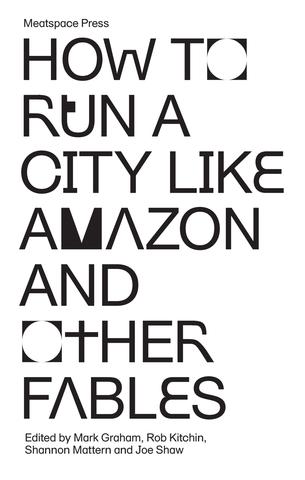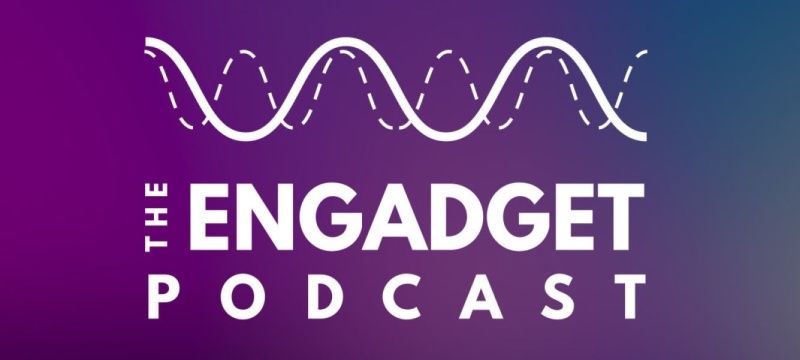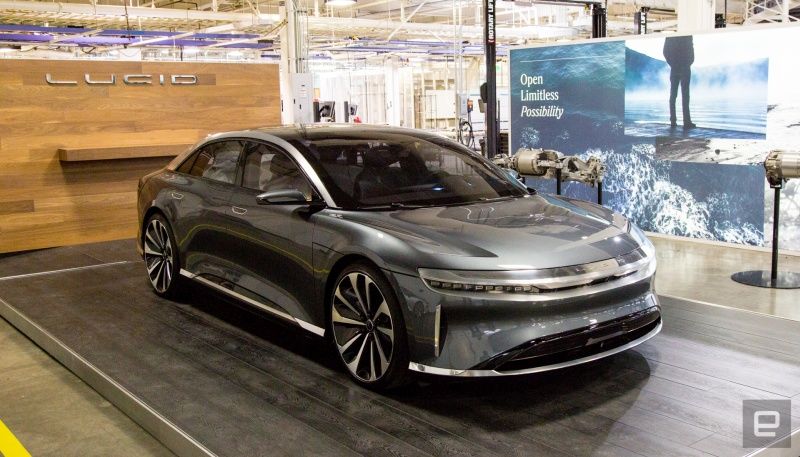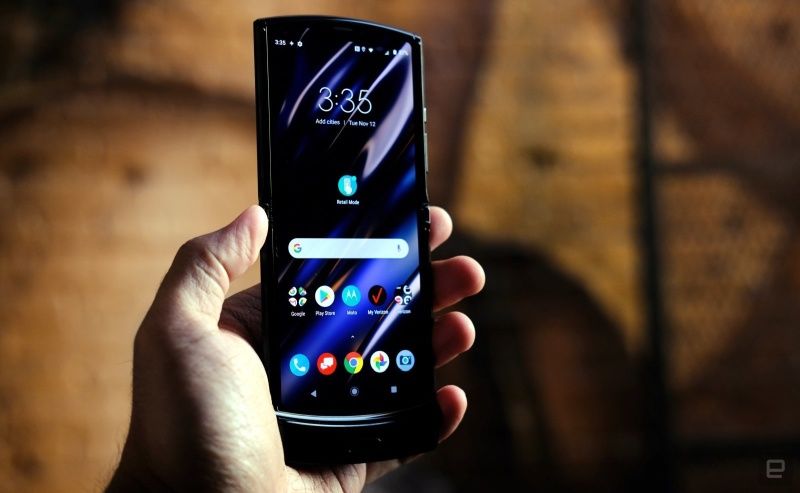How to Run a City Like Amazon and Other Fables
Edited by Mark Graham, Rob Kitchin, Shannon Mattern and Joe Shaw

Company towns should have died out with the paternalists who devised them in the 19th century but, since time is a flat circle, here we are again with Silicon Valley corporations seeking to supplant the authority of government. While Google builds acres of employee housing, Facebook works to mint its own currency.
How to Run a City Like Amazon examines the what tomorrow’s society would look like should Amazon — Tinder, Grindr, Uber, Vodafone, Siri, Google Fiber, or Snapchat — appy their business practices to the augmentation of government function.
In the piece of speculative fiction below, Newcastle University’s James Ash posits what life would be like if local government operated under the guiding principles (not to mention direct control) of Twitter’s corporate mission statement.
Lisa awoke and checked the smart sleeve of her shirt. Displayed on the fabric in e-ink was her total number of lifetime followers on Twitter and the number of follows she had to spend. 93 available follows. Lisa was aiming for 100.
Since Twitter had taken over the governance of London, following the great democratic dissolution of 2038, things had changed significantly. Although Twitter had begun as a social media company in the mid-2000s, it had rapidly expanded. First streaming video and live events through the Twitter platform in the late 2010s, by the mid-2020s it had partnered with a series of challenger banks to create a new form of digital currency: the follow.
The follow as a unit of exchange was transformative. No longer created through the production of goods or services, the follow was a unit created through the direct capture of human attention itself. In early versions of Twitter, people could follow one another and broadcast messages to their followers. In turn, Twitter used its knowledge of user behaviour to target advertising through promoted tweets within a user’s timeline.
Alongside promoted advertising, companies quickly became aware that users with the most followers had significant influence and paid such ‘influencers’ to implicitly and explicitly advertise and market their products and services directly. As such, two economies operated on Twitter at any one time. The formal attention economy involved Twitter selling targeted advertising to its customers (the companies and businesses that wanted to advertise on it). The informal economy involved users selling the attention they had garnered to companies directly, evidencing their influence through the number of followers they had.
For Twitter, the success of the platform and its ability to create profit was based on the overall number of users on the platform as a whole. But for individual users what mattered was their specific number of followers, which they could use as a currency to convince advertisers to pay them.
The follow currency, introduced in 2024, had begun as an attempt to expand the formal economy of Twitter as a space for selling advertising and attention. No longer confined to the screens of PCs and smart phones, Twitter took advantage of the wide-scale adoption of Alternative Reality (AR) lenses, projections and fabrics that now overlaid almost every surface of the built environment and formed the material of most clothing. As well as ‘earning’ followers by posting interesting content to the Twitter platform, users could also earn follows by viewing and displaying advertising that was emitted from these surfaces, which were customised to users’ individual Twitter profiles (mandatory since 2039).
As a currency, follows had both a public and private aspect. On the one hand, follows referred to the publicly visible total number of follows and followers gained over the lifetime of a user’s account. On the other hand, follows referred to a privately visible available number of follows, which were the total number of follows that could be exchanged for services. A user may have 1000 lifetime follows, for example, but have spent 600 follows, meaning that they had only 400 follows available to use.
Twitter argued that the follow currency was a great means to generate additional income, especially for the low paid and those on zero-hour contracts, who now made up around 67% of the working age population. Whereas the national currency, the Great British Pound, could be earnt and spent on anything, the follow could be used only on a range of Twitter-owned or approved services, such as utility bills, city taxation and, in some cases, city housing.
For the rich or Twitter famous, follows meant little as a currency of exchange. Utilities, rent and tax could be paid using pounds. At the same time, verified users and popular influencers could join the follow exchange programme and cash out their follows for pounds, allowing them to leverage the follows they were paid as part of advertising deals to enhance their monetary wealth. But, for people like Lisa, who were neither verified, famous, or part of the follow exchange programme, follows remained a necessary means of accessing services. For Lisa, follows were the difference between heating the flat and going cold. Follows were the difference between paying her city tax or having bailiffs knocking on the door.
The 100 follows that Lisa needed would pay her overdue electricity bill. Although she worked at a logistics packing warehouse, her hours were unreliable, and she never knew if there was a shift available until two hours before it was due to start. With no email confirming her on the morning shift, Lisa had little other choice than to tap on the smart sleeve of her shirt and browse the range of self-advertising options. As well as paying users to view adverts, Twitter would also pay users to broadcast adverts from their own smart clothing. The number of follows earned depended on the profile of the user, the type of advert emitted, where the user was located, and the length of time the advert was emitted.
Twitter celebrities with hundreds of thousands or even millions of followers were in high demand for self-advertising. These users had the option from Twitter to advertise aspirational and designer brands such as Louis Vuitton, Rolex and Chanel and could earn thousands of follows per minute for doing so at the right place and time. In the same way that verified users could exchange their follows for pounds, more popular users could also utilise hashtags to influence trends and conversations on their followers feeds, generating more followers and thus more money.
As a user with only 93 available follows, Lisa’s options were rather more limited. If she stayed in a public space in her own neighbourhood, Brixton, she could advertise dog food for 1 follow per hour or an escort service for 5 follows per hour. ‘Gross’, she thought. If she travelled on the underground to Covent Garden she could probably advertise ice cream or English tea to tourists for 2.5 follows per hour. However, she wouldn’t know what products were available to advertise, or their rate of pay, until she actually arrived in Covent Garden, as Twitter’s advertising service would only offer self-advertising options depending on her location at the time. The underground cost 2 follows to use, so travelling to Covent Garden was risky.
Lisa also had to take into account the anti-loitering laws that Covent Garden had introduced when self-advertising on smart clothing had become popular through Twitter. In the first few months residents had complained that people from poorer areas would travel to Covent Garden and stand in the same spot all day in order to earn the maximum number of follows. As such, in Covent Garden, the advert would only emit from her clothing if the GPS in her shirt registered movement, with stops of no more than three minutes allowed at any one point. In Brixton, however, she could loiter all she wanted without the advert, and thus her earnings, being interrupted.
She would take a risk. Leaving the flat she walked to the underground and took the train to Covent Garden. Leaving the station she checked the options on her smart shirt again. Scottish shortbread for 2 follows an hour. It would do, she thought. Activating the advert, her shirt turned a bright red tartan. The short bread brand logo began to rotate across the surface of the shirt and a short bag pipe tune began to play from the speakers sewn into the shirt’s lining. Rolling her eyes in dull acceptance, she began to walk the streets around the market.
Many ignored the advert as she walked. Using face and eye tracking technology in the cameras on the shirt, the advertising API recognised the lack of interest and increased the volume of the bagpipe tune. The regulated volume limit for self-advertising in Covent Garden was 84 decibels, but even so, the tune gave Lisa a headache. Lisa knew that if the advert did not register enough attention, then her rate of pay in follows would drop until she was earning nothing and the advert disappeared from the surface of the shirt. Within an hour, the advertised rate of 2 follows an hour had dropped to 1. Seven hours later Lisa had earned enough to pay her overdue bill and a fare home to Brixton.
Paying her electricity bill as she walked back to the underground station, Lisa looked around her. In London, not having advertising on your smart clothes was itself a sign of distinction and wealth. Twitter had promised that the follow currency would usher in a new era of reduced costs and democratic access to services in London. For Lisa, and many others like her, it had done the opposite.
Earning the human attention that the follow currency was based on required being out in public, but doing so physically marked out those who could only earn follows through self-advertising. Trapped in a cycle of spending and earning follows, such users had little to no chance of accessing better self-advertising deals or the kind of direct advertising offered to popular influencers on Twitter.
While Twitter had transformed the aesthetics of the city and how it was used, it seemed that this transformation had reinforced existing inequalities between rich and poor, the haves and the have-nots. Arriving back at her flat at 10pm, Lisa went to bed with the ringing of sampled bagpipes in her ears. As her eyes closed she wondered if she would be called up to take a shift at the warehouse in the morning or would have to resort to more self-advertising. Neither option offered much appeal.
Excerpted from How to Run a City Like Amazon, and Other Fables, edited by Mark Graham, Rob Kitchin, Shannon Mattern and Joe Shaw (Meatspace Press, 2019)
James Ash is a Senior Lecturer at Newcastle University, where they research the cultures, economies and politics of digital technology. They are the author of Phase Media (2017), The Interface Envelope (2015) and an editor, with Rob Kitchin and Agnieszka Leszczynski, of Digital Geographies (2018).












